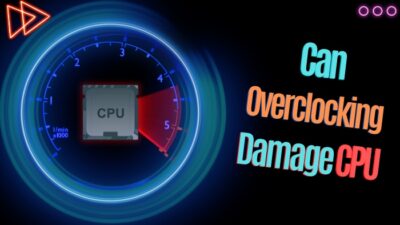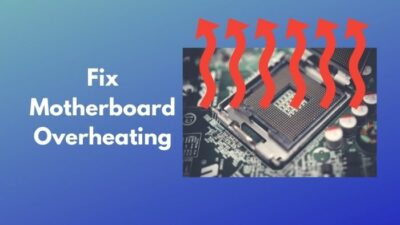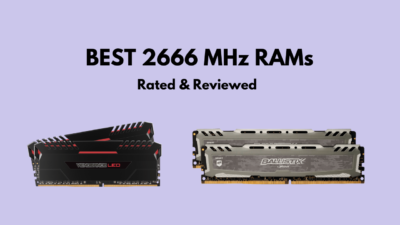Because hardware names are so similar in the present era of computers, they are extremely confusing for many users. Just like RAM and ROM, many users are confused about what is what and the main differences between them.
So, in this article, I’ll explain the primary distinction between RAM and ROM, as well as what they stand for. 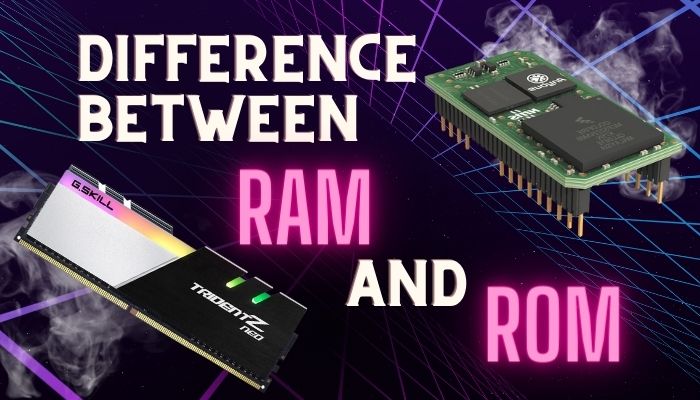 Tag Along!
Tag Along!
Check out the easiest way to increase RAM speed.
What is the Difference Between RAM and ROM?
RAM is a storage device that temporarily stores the information you are operating on. ROM is non-volatile storage that holds information for your system indefinitely. RAM and ROM, which stand for random access and read-only memory, are both included in your PC.
Here are the main differences between RAM and ROM:
| Dissimilarity | RAM | ROM |
|---|---|---|
| Data Preservation | RAM (Random Access Memory) is a storage device that can store information for as long as power is available. | ROM (Read Only Memory) is non-volatile storage that can help save information even when the electricity is switched off. |
| Working Nature | A computer can recover and alter data stored in RAM. | A computer can only read information stored in the ROM. It cannot be modified or erased. |
| Usage | A computer uses RAM to store information that the processor handles temporarily. | A computer's ROM contains the commands needed during system bootup. |
| Memory Speed | RAM has a greater memory speed than ROM. | ROM has a lesser memory speed than RAM. |
| CPU Cooperation | The Processor can enter the data saved on RAM. | The Processor cannot access ROM data unless it has previously been placed in RAM. |
| Volume and Capacity | In comparison to ROM, RAM is larger in size and has a greater capacity. | Compared to RAM, ROM is smaller in size and has less storage. |
| Shape | The RAM microchip is shaped like a rectangle and is placed into the computer's motherboard. | ROM is a square device with pin connections. It can be found on the motherboard of a PC as well as other types of electronic devices. |
| Types | RAM is divided into two categories SRAM (Static Random Access Memory) and DRAM (Dynamic Random Access Memory). | There are three varieties of ROM: PROM (Programmable ROM), EPROM (Erasable PROM), and EEPROM (Electrically EPROM). |
| Uses | Computers use RAM to store data as a CPU cache and primary memory. | Microcontrollers utilize ROM as firmware in their electronic devices. |
| Accessibility | The system may simply access the information saved in RAM at any time. | The data stored in ROM is not as immediately available to the system as RAM. |
| Storage Size | RAM is capable of storing a few gigabytes (GB) of information at a time. | A ROM microchip can hold several megabytes (MB) of information. |
| Cost | RAM is significantly more expensive than ROM. | ROM is less expensive than RAM. |
What Is RAM?
RAM stands for temporary memory, which means that when you restart or shut down your system, the data momentarily stored in the unit is deleted. Because data is stored electrically on semiconductors, it vanishes when no electrons move from one point to another.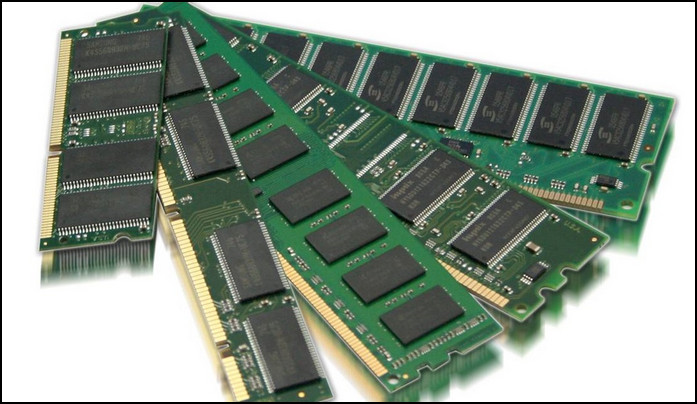 When you demand a document or data, either it is obtained from the device’s disk drive or from the web. Because the information is saved in RAM, it is instantaneously available when you transition from one application or webpage to another.
When you demand a document or data, either it is obtained from the device’s disk drive or from the web. Because the information is saved in RAM, it is instantaneously available when you transition from one application or webpage to another.
So when the system is turned off, the RAM is wiped until the operation can be restarted. Users can modify, replace, or extend RAM any time they want.
There are two types of RAM available right now. Static RAM, or (SRAM), is one type of RAM that saves a bit of information using the position of a six-semiconductor memory module. Another form is Dynamic RAM, or (DRAM), which saves bit information in a memory module made up of a combination of transistors and capacitors.
Go through our epic guide on DDR4 vs. DDR5.
What is ROM?
In systems, ROM refers to non-volatile storage, which implies the data is constantly held on the device. To save information, the ROM does not use electrical currents; rather, information is written to single cells utilizing a digital signal. Non-volatile storage is utilized for non-changing elements of the system, such as the initial boot-up section of the program or the programming commands that allow your copier to function. Switching off the machine has no impact on ROM. People cannot alter or add non-volatile storage for themselves.
Non-volatile storage is utilized for non-changing elements of the system, such as the initial boot-up section of the program or the programming commands that allow your copier to function. Switching off the machine has no impact on ROM. People cannot alter or add non-volatile storage for themselves.
There are four varieties of ROM: Programmable ROM, Erasable Programmable ROM, Electrically Erasable Programmable ROM, and Mask ROM.
Some more guides on how to check RAM on Windows 11, how to overclock DDR4 RAM.
Conclusion
People can easily confuse RAM and ROM by their names because they sound similar in the ears and seem the same to the sight.
So, in this post, I’ve discussed what RAM and ROM are and the fundamental differences between them.
I hope you found this article useful. If you have any questions or comments, leave them in the section below.

